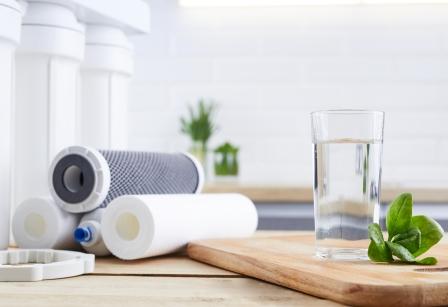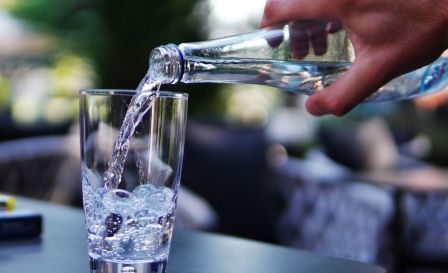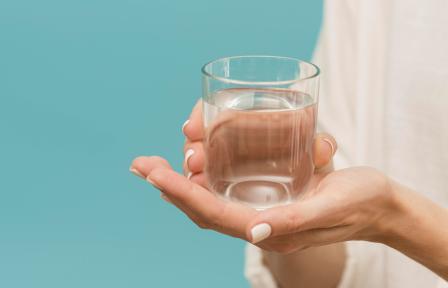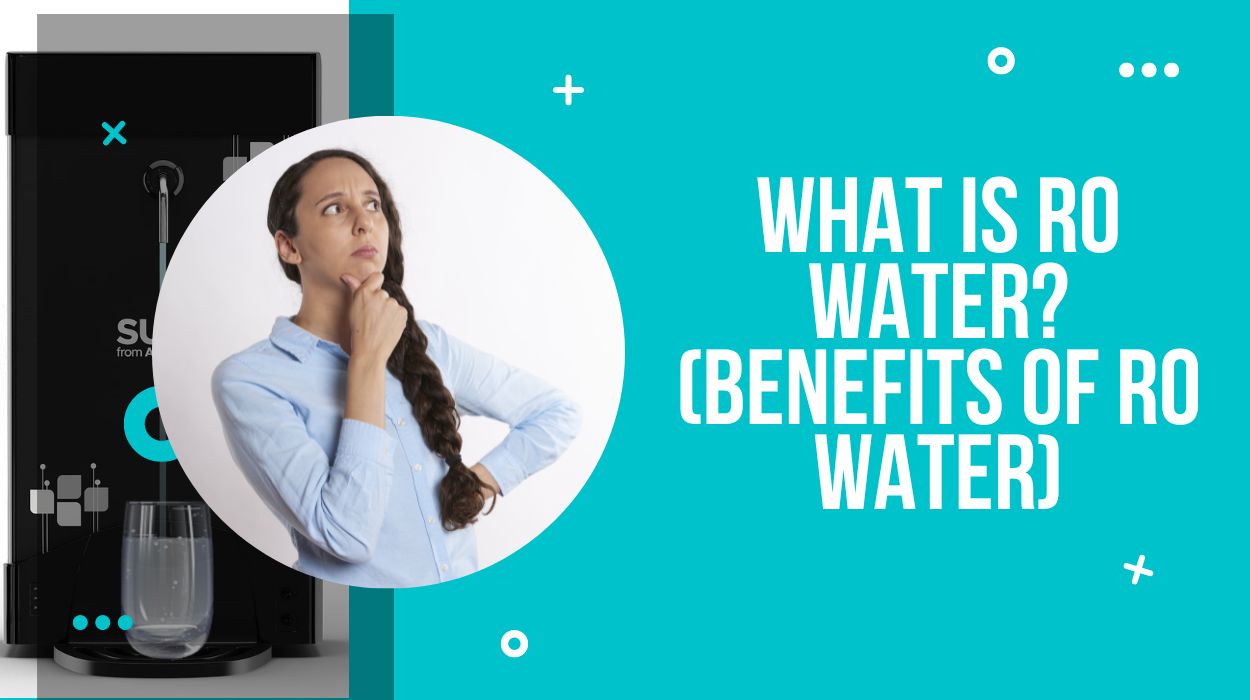You may have noticed that the majority of bottled water companies claim to use reverse osmosis to purify their water. But, have you ever wondered what reverse osmosis technology is and how it works?
If yes, then we will help you! In this article, we are going to inform you about what exactly is RO water, how it is made, and when it is good for you.
What Is RO Water?
Now that you know what reverse osmosis is, let’s move on to RO water. In simple terms, RO water is water that has very low TDS levels. It is purified multiple times until its minerals and salts are removed. Now, you might wonder how those minerals get into the water; well, when the water flows through the ground, it absorbs these minerals
How Reverse Osmosis Works?

In reverse osmosis, the water is pushed into a semipermeable membrane under very high pressure. The pores of this membrane are very small (0.0001 microns), due to which only the water molecules can pass through it and 90% of the impurities are eliminated.
The water in an RO system goes through the following stages:
- Sediment Filter – Firstly, the water flows through the sediment filter where all the solid impurities (rust, sand, etc.) are removed.
- Activated Carbon Filter – During this stage, the invisible impurities like arsenic, chlorine, and pesticides, etc., are eliminated.
- Post Carbon Filter – After the solid impurities are removed, the water travels through a post-carbon where its colour and taste are enhanced.
- RO Membrane – At last, the water passes through the semi-permeable membrane, which traps all the dissolved substances and only pure, distilled water is left.
Benefits Of RO Water
Some health benefits of drinking RO water are:
1. Best In Quality

RO purification systems can eliminate up to 95-99% of contaminants from the water. They can remove most of the harmful dissolved solids from the water, making it safest for drinking.
2. Better Colour, Taste, And Smell

Dissolved solids such as chlorine and fluoride in water can alter their smell and taste. But with an RO purifier, you don’t have to worry anymore!
Nowadays, the majority of RO water purifiers are equipped with carbon and post-carbon filters. These filters can eliminate the chlorine and foul smell from the water while enhancing its appearance and taste.
3. No Bacteria Or Viruses

RO purification systems can kill all the harmful bacteria and viruses present in the water, saving you from various waterborne diseases such as typhoid, diarrhoea, and cholera, etc. Therefore, we recommend you go for an RO water purifier if your area has a dirty water supply.
4. Low In Sodium

Consuming a high amount of sodium (in water) can cause various ailments like high blood pressure and kidney/liver problems. However, most RO purifiers can eliminate around 90-95 % sodium from water, making it a perfect choice for kidney and heart patients.
Is RO Water Fit For Consumption?

Yes, RO water is completely safe best water for drinking since an RO system can successfully eliminate even the high TDS (600 mg/L and above) from the water. Consuming water with high TDS levels may be hazardous to your health and lead to various illnesses.
In fact, certain dissolved solids, such as arsenic, nitrates and, fluorides, etc., are harmful even when present in small quantities. Therefore, using an RO water purifier will decrease the health risks associated with drinking contaminated water.
Do You Need RO Water Purifier For Low TDS Water?
No, you don’t need an RO water purifier if your water has very low TDS levels. In fact, some dissolved solids such as calcium, magnesium, and potassium, etc., are vital to maintaining the health of the body.
The WHO has set a limit on the TDS levels in the water. It states that TDS level:
Less than 300 mg/L is ideal.
Between 300-600, mg/L is good.
600-900 mg/L is fair.
900-1200 mg/L is poor
Above 1200 mg/L is unacceptable.
Therefore, you need an RO water purifier only if the TDS of your water is 600mg/L or above.
FAQs
1. How long does an RO filter last?
If you maintain your RO filter properly, it will last for 2-3 years. However, we recommend replacing it once a year to ensure you get clean water.
2. How often do I need to flush my RO membrane?
While you should flush your RO membrane at least once a day, it is best to do so after each use. Without flushing, mould can grow inside your RO membrane and cause clogging.
You May Also Like To Read:
5 Reasons Why Your RO Water Tastes Bitter
When To Change RO Membrane & Filters?
Which Water Purifier Is Best For Health?
Conclusion
By now, we hope you have all the required information about RO water. Water purified through an RO system is completely safe for drinking.
However, you need to keep in mind that RO is required only if your water has high TDS levels. Also, if you want to buy an RO water filter, we have compiled a list of the best RO water filters to choose from.
For any other questions, please type them comment section below. We will be happy to help you!


